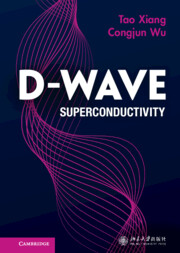Book contents
- Frontmatter
- Contents
- Preface
- Abbreviations
- 1 Introduction to Superconductivity
- 2 Microscopic Models for High Temperature Superconductors
- 3 Basic Properties of d-wave Superconductors
- 4 Quasiparticle Excitation Spectra
- 5 Tunneling Effect
- 6 Josephson Effect
- 7 Single Impurity Scattering
- 8 Many-Impurity Scattering
- 9 Superfluid Response
- 10 Optical and Thermal Conductivities
- 11 Raman Spectroscopy
- 12 Nuclear Magnetic Resonance
- 13 Neutron Scattering Spectroscopy
- 14 Mixed State
- Appendix A Bogoliubov Transformation
- Appendix B Hohenberg Theorem
- Appendix C Degenerate Perturbation Theory
- Appendix D Anderson Theorem
- Appendix E Sommerfeld Expansion
- Appendix F Single-Particle Green’s Function
- Appendix G Linear Response Theory
- References
- Index
9 - Superfluid Response
Published online by Cambridge University Press: 17 June 2022
- Frontmatter
- Contents
- Preface
- Abbreviations
- 1 Introduction to Superconductivity
- 2 Microscopic Models for High Temperature Superconductors
- 3 Basic Properties of d-wave Superconductors
- 4 Quasiparticle Excitation Spectra
- 5 Tunneling Effect
- 6 Josephson Effect
- 7 Single Impurity Scattering
- 8 Many-Impurity Scattering
- 9 Superfluid Response
- 10 Optical and Thermal Conductivities
- 11 Raman Spectroscopy
- 12 Nuclear Magnetic Resonance
- 13 Neutron Scattering Spectroscopy
- 14 Mixed State
- Appendix A Bogoliubov Transformation
- Appendix B Hohenberg Theorem
- Appendix C Degenerate Perturbation Theory
- Appendix D Anderson Theorem
- Appendix E Sommerfeld Expansion
- Appendix F Single-Particle Green’s Function
- Appendix G Linear Response Theory
- References
- Index
Summary
Chapter 9 calculates the superfluid density as a function of temperature in d-wave superconductors. The in-plane superfluid density varies linearly at low temperatures. The c-axis superfluid density, on the other hand, is predicted to behave as T5 in copper oxides at low temperatures if the gap function possesses the dx2-y2-wave symmetry. This peculiar T5-dependence of the superfluid density was confirmed by experiments. Both the in-plane and c-axis superfluid densities, however, vary quadratically with temperature if the impurity scattering becomes important. The superfluid response in a two-gap system is discussed and applied to explain the anomalous temperature dependence of the superfluid density in electron-doped high-Tc materials. Both the nonlinear and nonlocal effects on the superfluid density of d-wave superconductors are also discussed.
- Type
- Chapter
- Information
- D-wave Superconductivity , pp. 204 - 239Publisher: Cambridge University PressPrint publication year: 2022

